Opinion & Analysis
Imagine what drivers will look like in 30 years
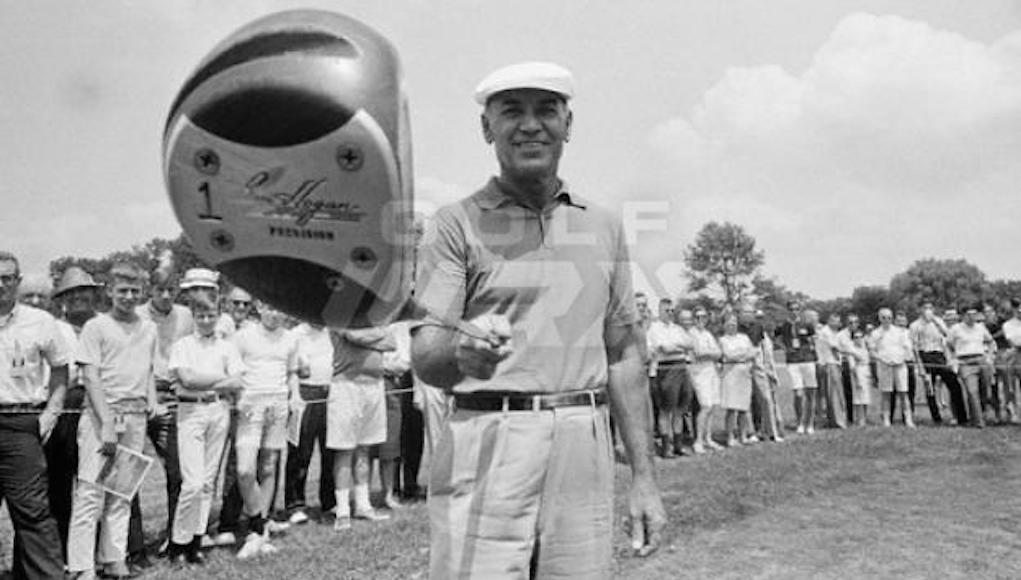
At one point in the early 1980s, Dan Pohl was the longest driver on the PGA Tour, averaging 274 yards with the Big Dog. As a teenage spectator watching from afar, I only became aware of him and his prodigious drives at the 1982 Masters. He tore up the back nine and managed to get into a playoff with Craig Stadler, the eventual winner. One thing I did pick up on was that he was using a “metal wood,” and the commentators were analyzing how much this ground-breaking new technology added to his length. I mean, a metal wood! It was the stuff of tomorrow; space-age cool!
This contradiction in terms (how can a wood be made of metal?) was offset by the results. Longer, straighter and more forgiving drives (see, the message hasn’t changed that much in nearly 35 years) resulted from this Pittsburgh Persimmon driver, as one brand so adeptly named it. The sheer audaciousness of this technological breakthrough!
It coincided with the advent of graphite shafts as well. Materials like boron and graphite were enabling club designers to make shafts lighter, stronger and longer, which in turn were delivering more distance with different ball flights. It must have been a golden time for golfing physicists and engineers. No longer were driver heads hand-carved out of blocks of persimmon. These hollow metal heads were designed on computers and cast in volume production lines with high yields and consistency. They offered strength and versatility. The marketing guys were shaping up for a field day. How could they lose?
Very quickly the golf shops filled up with these new metal woods. Persimmon had been around forever and still had its place for the purists, but once Ely Callaway got on board with his Big Bertha creation in 1991, we effectively waved goodbye to wooden-headed clubs forever.
I’d made my mind up that this was the future, so I set about as a 15-year-old aspiring golfer to acquire one. At that age it’s all about the shiny stuff, right? For the previous 12 months, I was learning the game with a Ben Hogan persimmon driver, my pride and joy. It was considered at the time “state of the art” with good quality persimmon and a fancy “speed slot.”
According to a Hogan ad, the slot was a “new and original idea to increase club head speed. This is not a theory, but a fact proven by a well-known physicist!” In terms of specs it said “1” on the sole; I had no idea what loft it was, only that it had a stiff shaft. I got it because it felt nice and I went off and learned how to hit it. The biggest modification I had was putting a new grip on it. The face of the club had four screws, and when you caught one the expression “hit it on the screws” became a very memorable feeling.
The Hogan stick was dropped quicker than a hot potato when I discovered metal. I soon managed to snag my first metal wood, a Titleist PT 9-degree driver from the second-hand bin in my local golf shop. I can’t remember exactly how much I paid for it, though; yes, it was that long ago. It had a steel shaft with a gleaming silver-and-grey color scheme. Man, that head was huge compared to my old Hogan. And from the day and hour I got the new metal driver, I never looked back to a wooden driver. I was sold. I was able to really wallop that thing, and over the next couple of years I nearly wore it out. I could even pick it off the fairway very successfully when my eye was in.
I quickly added a metal three wood — first from Titleist and then from Wilson Staff — and a metal five wood from Mizuno, which was an early predecessor to the hybrid. It had a small head and I was able to hit that thing from almost any lie. It had a gold boron shaft, too. To me, it was so high tech that it almost felt like cheating.
Over the years, I gamed the later offerings from Titleist as well as the latest clubs from TaylorMade, Callaway, Tour Edge, Cobra and Ping. I’ve tried most and make a point of keeping up to date with the latest technology. But how much more technical has it become? It’s interesting that Dan Pohl’s leading stats are now laughable compared with numbers of Tony Finau, who hits it an average of 314 yards per poke. That’s 40 yards folks!
There are now titanium heads, carbon heads, composite heads, face inserts, moveable weights, speed slots, and variable lofts and lies. Launch monitor technology has given us access to knowledge and a level of customization far beyond what we once knew. My specs from 20 years ago were “8.5 degrees with a stiff shaft.” Now I can print off a sheet that looks like it was generated by NASA highlighting my smash factor, spin rates, launch angles, ball speed and what I had for breakfast. A pro can now recommend the perfect club for me.
Over the last 10 years, the big buzz has been the spring-like effect known as Coefficient of Restitution (COR). Coupled with head size getting to space-hopper proportion, the authorities decided to step in to limit what was possible. So COR is now limited to 0.830 and the maximum club head size to 460 cubic centimeters in an attempt to “maintain the challenge of the game.”
It’s now all about materials science, manufacturing tolerances and optimizing shape for maximum speed. Scientists have access to nanomaterials that are used in aerospace construction. Callaway just co-designed their latest offering with help from Boeing! Moveable weight systems coupled with variable lofts and lies means we can tweak our drivers to our heart’s content if an effort to optimize a high-launch, low-spin, straight drive. We now also have our own custom colors and decals.
Imagine what our drivers will look like in 30 years! Oh, and then there is the “frigging golf ball”, as Jack so eloquently put it, but that’s a whole ‘nother rant!
- LIKE82
- LEGIT11
- WOW5
- LOL8
- IDHT4
- FLOP5
- OB1
- SHANK67
Opinion & Analysis
The Wedge Guy: What really makes a wedge work? Part 1

Of all the clubs in our bags, wedges are almost always the simplest in construction and, therefore, the easiest to analyze what might make one work differently from another if you know what to look for.
Wedges are a lot less mysterious than drivers, of course, as the major brands are working with a lot of “pixie dust” inside these modern marvels. That’s carrying over more to irons now, with so many new models featuring internal multi-material technologies, and almost all of them having a “badge” or insert in the back to allow more complex graphics while hiding the actual distribution of mass.
But when it comes to wedges, most on the market today are still single pieces of molded steel, either cast or forged into that shape. So, if you look closely at where the mass is distributed, it’s pretty clear how that wedge is going to perform.
To start, because of their wider soles, the majority of the mass of almost any wedge is along the bottom third of the clubhead. So, the best wedge shots are always those hit between the 2nd and 5th grooves so that more mass is directly behind that impact. Elite tour professionals practice incessantly to learn to do that consistently, wearing out a spot about the size of a penny right there. If impact moves higher than that, the face is dramatically thinner, so smash factor is compromised significantly, which reduces the overall distance the ball will fly.
Every one of us, tour players included, knows that maddening shot that we feel a bit high on the face and it doesn’t go anywhere, it’s not your fault.
If your wedges show a wear pattern the size of a silver dollar, and centered above the 3rd or 4th groove, you are not getting anywhere near the same performance from shot to shot. Robot testing proves impact even two to three grooves higher in the face can cause distance loss of up to 35 to 55 feet with modern ‘tour design’ wedges.
In addition, as impact moves above the center of mass, the golf club principle of gear effect causes the ball to fly higher with less spin. Think of modern drivers for a minute. The “holy grail” of driving is high launch and low spin, and the driver engineers are pulling out all stops to get the mass as low in the clubhead as possible to optimize this combination.
Where is all the mass in your wedges? Low. So, disregarding the higher lofts, wedges “want” to launch the ball high with low spin – exactly the opposite of what good wedge play requires penetrating ball flight with high spin.
While almost all major brand wedges have begun putting a tiny bit more thickness in the top portion of the clubhead, conventional and modern ‘tour design’ wedges perform pretty much like they always have. Elite players learn to hit those crisp, spinny penetrating wedge shots by spending lots of practice time learning to consistently make contact low in the face.
So, what about grooves and face texture?
Grooves on any club can only do so much, and no one has any material advantage here. The USGA tightly defines what we manufacturers can do with grooves and face texture, and modern manufacturing techniques allow all of us to push those limits ever closer. And we all do. End of story.
Then there’s the topic of bounce and grinds, the most complex and confusing part of the wedge formula. Many top brands offer a complex array of sole configurations, all of them admittedly specialized to a particular kind of lie or turf conditions, and/or a particular divot pattern.
But if you don’t play the same turf all the time, and make the same size divot on every swing, how would you ever figure this out?
The only way is to take any wedge you are considering and play it a few rounds, hitting all the shots you face and observing the results. There’s simply no other way.
So, hopefully this will inspire a lively conversation in our comments section, and I’ll chime in to answer any questions you might have.
And next week, I’ll dive into the rest of the wedge formula. Yes, shafts, grips and specifications are essential, too.
- LIKE27
- LEGIT7
- WOW1
- LOL1
- IDHT2
- FLOP3
- OB1
- SHANK2
Golf's Perfect Imperfections
Golf’s Perfect Imperfections: Amazing Session with Performance Coach Savannah Meyer-Clement

In this week’s episode, we spent some time with performance coach Savannah Meyer-Clement who provides many useful insights that you’ll be able to implement on the golf course.
- LIKE0
- LEGIT0
- WOW0
- LOL0
- IDHT0
- FLOP0
- OB0
- SHANK1
19th Hole
Vincenzi’s 2024 RBC Heritage betting preview: Patrick Cantlay ready to get back inside winner’s circle

Just a two-hour drive from Augusta National, the PGA TOUR heads to Harbour Town Golf Links in Hilton Head Island, S.C. Hilton Head Island is a golfer’s paradise and Harbour Town is one of the most beautiful and scenic courses on the PGA TOUR.
Harbour Town Golf Links is a par-71 that measures 7,121 yards and features Bermuda grass greens. A Pete Dye design, the course is heavily tree lined and features small greens and many dog legs, protecting it from “bomb-and-gauge” type golfers.
The field is loaded this week with 69 golfers with no cut. Last year was quite possibly the best field in RBC Heritage history and the event this week is yet another designated event, meaning there is a $20 million prize pool.
Most of the big names on the PGA Tour will be in attendance this week with the exceptions of Hideki Matsuyama and Viktor Hovland. Additionally, Webb Simpson, Shane Lowry, Gary Woodland and Kevin Kisner have been granted sponsors exemptions.
Past Winners at Harbour Town
- 2023: Matt Fitzpatrick (-17)
- 2022: Jordan Spieth (-13)
- 2021: Stewart Cink (-19)
- 2020: Webb Simpson (-22)
- 2019: CT Pan (-12)
- 2018: Sotoshi Kodaira (-12)
- 2017: Wesley Bryan (-13)
- 2016: Branden Grace (-9)
- 2015: Jim Furyk (-18)
In this article and going forward, I’ll be using the Rabbit Hole by Betsperts Golf data engine to develop my custom model. If you want to build your own model or check out all of the detailed stats, you can sign up using promo code: MATTVIN for 25% off any subscription package (yearly is best value).
Key Stats For Harbour Town
Let’s take a look at key metrics for Harbour Town Golf Links to determine which golfers boast top marks in each category over their past 24 rounds.
Strokes Gained: Approach
Strokes Gained: Approach is exceedingly important this week. The greens at Harbour Town are about half the size of PGA TOUR average and feature the second-smallest greens on the tour. Typical of a Pete Dye design, golfers will pay the price for missed greens.
Total SG: Approach Over Past 24 Rounds
- Scottie Scheffler (+1.27)
- Tom Hoge (+1.27)
- Corey Conners (+1.16)
- Austin Eckroat (+0.95)
- Cameron Young (+0.93)
Good Drive %
The fairways at Harbour Town are tree lined and feature many dog legs. Bombers tend to struggle at the course because it forces layups and doesn’t allow long drivers to overpower it. Accuracy is far more important than power.
Good Drive % Over Past 24 Rounds
- Brice Garnett (88.8%)
- Shane Lowry (+87.2%)
- Akshay Bhatia (+86.0%)
- Si Woo Kim (+85.8%)
- Sepp Straka (+85.1%)
Strokes Gained: Total at Pete Dye Designs
Pete Dye specialists tend to play very well at Harbour Town. Si Woo Kim, Matt Kuchar, Jim Furyk and Webb Simpson are all Pete Dye specialists who have had great success here. It is likely we see some more specialists near the top of the leaderboard this week.
SG: TOT Pete Dye per round over past 36 rounds:
- Xander Schauffele (+2.27)
- Scottie Scheffler (+2.24)
- Ludvig Aberg (+2.11)
- Brian Harman (+1.89)
- Sungjae Im (+1.58)
4. Strokes Gained: Short Game (Bermuda)
Strokes Gained: Short Game factors in both around the green and putting. With many green-side bunkers and tricky green complexes, both statistics will be important. Past winners — such as Jim Furyk, Wes Bryan and Webb Simpson — highlight how crucial the short game skill set is around Harbour Town.
SG: SG Over Past 24 Rounds
- Jordan Spieth (+1.11)
- Taylor Moore (+1.02)
- Wyndham Clark (+0.98)
- Mackenzie Hughes (+0.86)
- Andrew Putnam (+0.83)
5. Greens in Regulation %
The recipe for success at Harbour Town Golf Links is hitting fairways and greens. Missing either will prove to be consequential — golfers must be in total control of the ball to win.
Greens in Regulation % over past 24 rounds:
- Brice Garnett (+75.0%)
- Scottie Scheffler (+69.9%)
- Corey Conners (+69.0%)
- Shane Lowry (+68.3%)
- Patrick Rodgers (+67.6%)
6. Course History
Harbour Town is a course where players who have strong past results at the course always tend to pop up.
Course History over past 24 rounds:
- Patrick Cantlay (+2.34)
- Cam Davis (+2.05)
- J.T. Poston (+1.69)
- Justin Rose (+1.68)
- Tommy Fleetwood (+1.59)
The RBC Heritage Model Rankings
Below, I’ve compiled overall model rankings using a combination of the five key statistical categories previously discussed — SG: Approach (24%), Good Drives (20%), SG: SG (14%), SG: Pete Dye (14%), GIR (14%), and Course History (14%)
- Shane Lowry
- Russell Henley
- Scottie Scheffler
- Xander Schauffele
- Corey Conners
- Wyndham Clark
- Christiaan Bezuidenhout
- Matt Fitzpatrick
- Cameron Young
- Ludvig Aberg
2024 RBC Heritage Picks
Patrick Cantlay +2000 (FanDuel)
With the exception of Scottie Scheffler, the PGA Tour has yet to have any of their star players show peak form during the 2024 season. Last week, Patrick Cantlay, who I believe is a top-5 players on the PGA Tour, took one step closer to regaining the form that’s helped him win eight events on Tour since 2017.
Cantlay limped into the Masters in poor form, but figured it out at Augusta National, finishing in a tie for 20th and ranking 17th for the week in Strokes Gained: Ball Striking. The former FedEx Cup champion will now head to one of his favorite golf courses in Harbour Town, where he’s had immaculate results over the years. In his six trips to the course, he’s only finished worse than 7th one time. The other finishes include three third places (2017, 2019, 2023) and one runner-up finish (2022). In his past 36 rounds at Harbour Town, Cantlay ranks 1st in Strokes Gained: Total per round at the course by a wide margin (+2.36).
Cantlay is winless since the 2022 BMW Championship, which is far too long for a player of his caliber. With signs pointing to the 32-year-old returning to form, a “signature event” at Harbour Town is just what he needs to get back on the winning track.
Tommy Fleetwood +3000 (FanDuel)
I truly believe Tommy Fleetwood will figure out a way to win on American soil in 2024. It’s certainly been a bugaboo for him throughout his career, but he is simply too talented to go another season without winning a PGA Tour event.
At last week’s Masters Tournament, Fleetwood made a Sunday charge and ended up finishing T3 in the event, which was his best ever finish at The Masters. For the week, the Englishman ranked 8th in the field in Strokes Gained: Approach, 10th in Strokes Gained: Ball Striking and 16th in Strokes Gained: Putting.
Harbour Town is a perfect layout for Fleetwood, and he’s had relative success at this Pete Dye design in the past. In his four trips to the course, he’s finished inside of the top 25 three times, with his best finish, T10, coming in 2022. The course is pretty short and can’t be overpowered, which gives an advantage to more accurate players such as Fleetwood. Tommy ranks 8th in the field in Good Drive % and should be able to plot his way along this golf course.
The win is coming for Tommy lad. I believe there’s a chance this treasure of a golf course may be the perfect one for him to finally break through on Tour.
Cameron Young +3300 (FanDuel)
Cameron Young had a solid Masters Tournament last week, which is exactly what I’m looking for in players who I anticipate playing well this week at the RBC Heritage. He finished in a tie for 9th, but never felt the pressure of contending in the event. For the week, Young ranked 6th in Strokes Gained: Off the Tee and 6th in Strokes Gained: Ball Striking.
Despite being one of the longest players off the tee on the PGA Tour, Young has actually played some really good golf on shorter tracks. He finished T3 at Harbour Town in 2023 and ranks 20th in the field in Good Drive% and 16th in Greens in Regulation in his past 24 rounds. He also has strong finishes at other shorter courses that can take driver out of a players hand such as Copperhead and PGA National.
Young is simply one of the best players on the PGA Tour in 2024, and I strongly believe has what it takes to win a PGA Tour event in the very near future.
Corey Conners +5500 (FanDuel)
Corey Conners has had a disappointing year thus far on the PGA Tour, but absolutely loves Harbour Town.
At last week’s Masters Tournament, the Canadian finished T30 but ranked 20th in the field in Strokes Gained: Approach. In his past 24 rounds, Conners ranks 3rd in the field in Strokes Gained: Approach, 3rd in Greens in Regulation % and 24th in Good Drive %.
In Conners’ last four trips to Harbour Town, his worst finish was T31, last season. He finished T4 in 2021, T12 in 2022 and ranks 8th in Strokes Gained: Total at the course over his past 36 rounds.
Conners hasn’t been contending, but his recent finishes have been encouraging as he has finished in the top-25 in each of his past three starts prior to The Masters, including an impressive T13 at The PLAYERS. His recent improvement in ball striking as well as his suitability for Harbour Town makes Conners a high upside bet this week.
Shane Lowry (+7500) (FanDuel)
When these odds were posted after Lowry was announced in the field, I have to admit I was pretty stunned. Despite not offering much win equity on the PGA Tour over the last handful of years, Shane Lowry is still a top caliber player who has the ability to rise to the top of a signature event.
Lowry struggled to score at The Masters last week, but he actually hit the ball really well. The Irishman ranked 1st for Strokes Gained: Approach on the week and 7th in Strokes Gained: Ball Striking. As usual, it was the putter that let him down, as he ranked 60th in the field in Strokes Gained: Putting.
Harbour Town is most definitely one of Lowry’s favorite courses on the PGA Tour. In his six starts there, he’s finished in the top 10 three times, including third twice. Lowry is sensational at Pete Dye designs and ranks 7th in Strokes Gained: Total in his past 36 rounds on Dye tracks.
Lowry is perfect for Harbour Town. In his past 24 rounds, he ranks 5th in Strokes Gained: Approach, 2nd in Good Drive% and 5th in Green in Regulation %. If he figures it out on the greens, Shane could have his first win in America since 2015.
Lucas Glover +12000 (FanDuel)
This is one of my weekly “bet the number” plays as I strongly believe the odds are just too long for a player of Glover’s caliber. The odds have been too long on Glover for a few weeks now, but this is the first event that I can get behind the veteran being able to actually contend at.
Glover is quietly playing good golf and returning to the form he had after the understandable regression after his two massive victories at the end of 2023. He finished T20 at The Masters, which was his best ever finish at Augusta National. For the week, Lucas ranked 18th for Strokes Gained: Approach and 20th in Strokes Gained: Ball Striking.
Over his past 24 rounds, Glover ranks 9th in Strokes Gained: Approach and 13th in Good Drive %. Harbour Town is a short course that the 44-year-old will be able to keep up with the top players on Tour off the tee. He’s played the course more than 20 times, with mixed results. His best finishes at Harbour Town include a T7 in 2008, but recently has a finish of T21 in 2020.
Glover has proven he can contend with the stars of the Tour on any given week, and this number is flat out disrespectful.
- LIKE30
- LEGIT5
- WOW2
- LOL1
- IDHT1
- FLOP2
- OB0
- SHANK2
-

 19th Hole2 weeks ago
19th Hole2 weeks agoDave Portnoy places monstrous outright bet for the 2024 Masters
-

 19th Hole3 weeks ago
19th Hole3 weeks agoThings got heated at the Houston Open between Tony Finau and Alejandro Tosti. Here’s why
-

 19th Hole2 weeks ago
19th Hole2 weeks agoTiger Woods arrives at 2024 Masters equipped with a putter that may surprise you
-

 19th Hole2 weeks ago
19th Hole2 weeks agoReport: Tiger Woods has ‘eliminated sex’ in preparation for the 2024 Masters
-

 19th Hole7 days ago
19th Hole7 days agoTwo star names reportedly blanked Jon Rahm all week at the Masters
-

 19th Hole5 days ago
19th Hole5 days agoReport: LIV Golf identifies latest star name they hope to sign to breakaway tour
-

 19th Hole6 days ago
19th Hole6 days agoNeal Shipley presser ends in awkward fashion after reporter claims Tiger handed him note on 8th fairway
-

 19th Hole3 weeks ago
19th Hole3 weeks agoAddiction, spinal fusion, and scam artists – Everything Anthony Kim revealed in candid interview with David Feherty



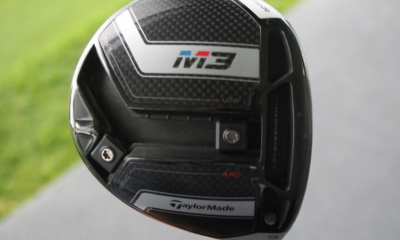

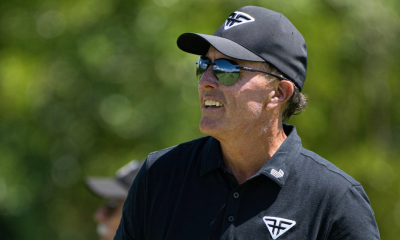



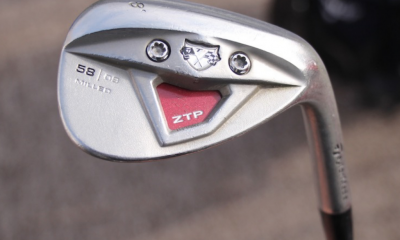

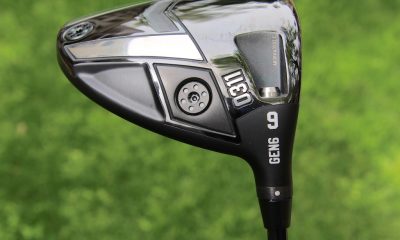

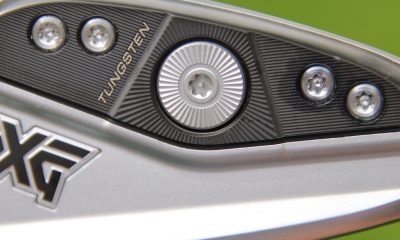












Christosterone
Sep 1, 2016 at 3:08 pm
This:
http://www.persimmongolfclubs.com/acatalog/JOE-ANDERSON-DISPLAY-CLUB.jpg
Wm
Aug 27, 2016 at 10:31 am
In the not too distant future they will be marketing customized one piece drivers where the head will be fused to the shaft. The marketers will claim more stability and better feel.
RAT
Aug 26, 2016 at 10:15 am
They should take the gloves off and let it be NO LIMITS on balls and clubs !
Tim
Aug 26, 2016 at 12:54 am
I would bet there are still some big changes coming the the shafts. They are going to give us shafts that flex and kick straight as the club face with tips that stay on line no matter how fast or had you hit the ball. I would bet we may even see shafts that have some kind of adjust ability for the amateur golfer to play around with…and then there will be lots of grip advancements with adjust ability in them also….lots of things to work on for the OEM’s to keep us buying the next hot new gimmick.
Chuck
Aug 25, 2016 at 9:49 pm
Others have already mentioned it; I am not so sure that the difference between a 2016 driver and a 2046 driver will be so dramatic, as the difference between a 1980 driver and a 2010 driver.
Just think about it; for 30 years — more, actually — tournament/tour golf saw virtually NO change in drivers. In the 1970’s and 80’s, the absolute rage among tour players and elite amateurs was to find very pure MacGregor drivers designed by player/designer Toney Penna from the 1950’s. Just about every major championship in golf for four decades was won with a persimmon driver that was generally about 20 years old. Jack Nicklaus was winning majors in the 1970’s with a 3-wood from the 1950’s. Players used to say that it was harder to find a good driver than it was to find a good wife. And once they found a gamer, they played with it until it broke. Then they got it repaired. And only after a club broke about three more times would they ever give up on it.
J.B.
Aug 25, 2016 at 8:09 pm
Materials since will dictate the future of clubs. With additive manufacturing, the face will be a graduated blend of materials to optimize the sweet spot to make the entire face respond at the edge of the rules. Clubs will stop being a head and a shaft, rather a single piece. The single piece clubs will be so well weighted and aero optimized that grandma will be showing 95+ mph swing speeds.
Professor smizzle
Aug 26, 2016 at 11:06 am
This man knows^^^^
The future is not development of the head, but of an entire one piece club optimised for each player.
mhendon
Aug 25, 2016 at 3:13 pm
I doubt I’ll be alive 30 years from now much less still playing.
Justin
Aug 25, 2016 at 1:22 pm
Technology is allowing more players to play the game effectively. I truly believe that more golfers could have competed on tour back in the day had the technology been better. The technology helps the bombers hit it straighter and helps everyone catch up to the pure ball strikers.
Id be happy if everything stayed the way it was. I can deal with guys like Justin Thomas carrying the ball 300+ yards in the air, but when you have 50+ guys on tour start to carry it the distance that Dustin, Bubba, and Rory do now…. that’s when we need to worry.
dsd
Aug 25, 2016 at 12:50 pm
just remember in the 200 years prior to the last 30 years club tech remained relatively unchanged. Similar to any industrial revolution, I don’t expect leaps and bounds of improvements over and over again.
Bruce Ferguson
Aug 25, 2016 at 12:44 pm
I would love to see new designs which would incorporate the dispersion/distance characteristics of today’s 460cc driver in a 360-400cc head. Whatever the future has in store, please don’t let it be even larger driver heads!
Tom
Aug 25, 2016 at 7:47 pm
M2 3 wood
Jnak97
Aug 27, 2016 at 1:08 am
Aeroburner mini driver
alfriday
Aug 25, 2016 at 12:41 pm
The last thirty or so years have been a transformative period in driver tech. I doubt the next thirty will go through anything nearly as drastic. The size of drivers has been limited. The spring effect has been limited. Newer, more exotic materials are available, but most are cost prohibitive. As companies push the envelop on the set performance limits, the changes will by necessity be less drastic.
The Real Swanson
Aug 25, 2016 at 12:39 pm
“Imagine what clubs looked like 30 years ago.” would be a more appropriate title.
Johnnylongballz
Aug 25, 2016 at 12:09 pm
Hopefully they don’t look that much different than today’s drivers. I hope that the USGA/R&A can limit technology’s impact on the game, maybe even roll it back a bit.
KJ
Aug 25, 2016 at 5:32 pm
C’mon now. Manufacturers are always going to be looking for something new, something different. It happens in every single industry with all products, Its called capitalism and the chase for the almighty dollar.